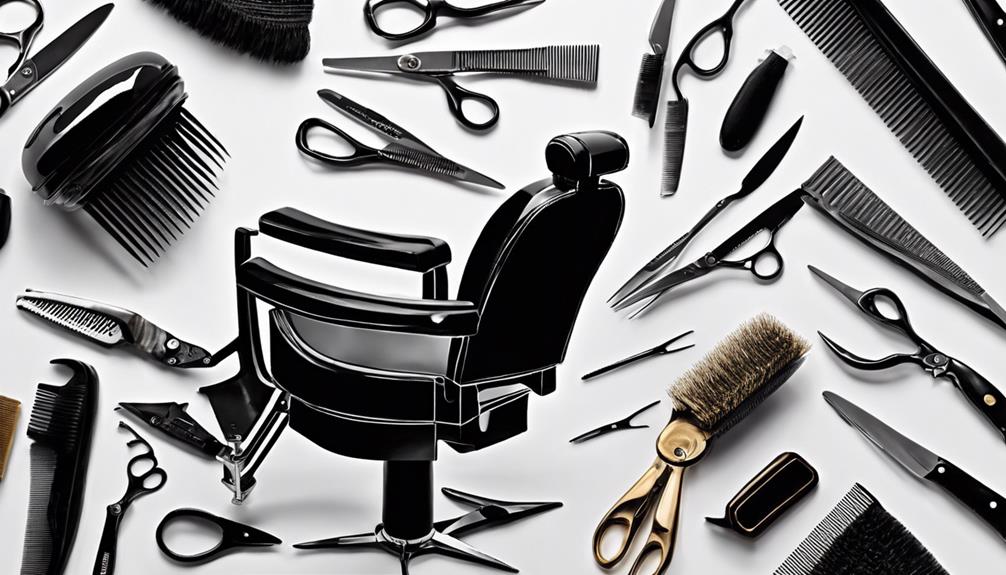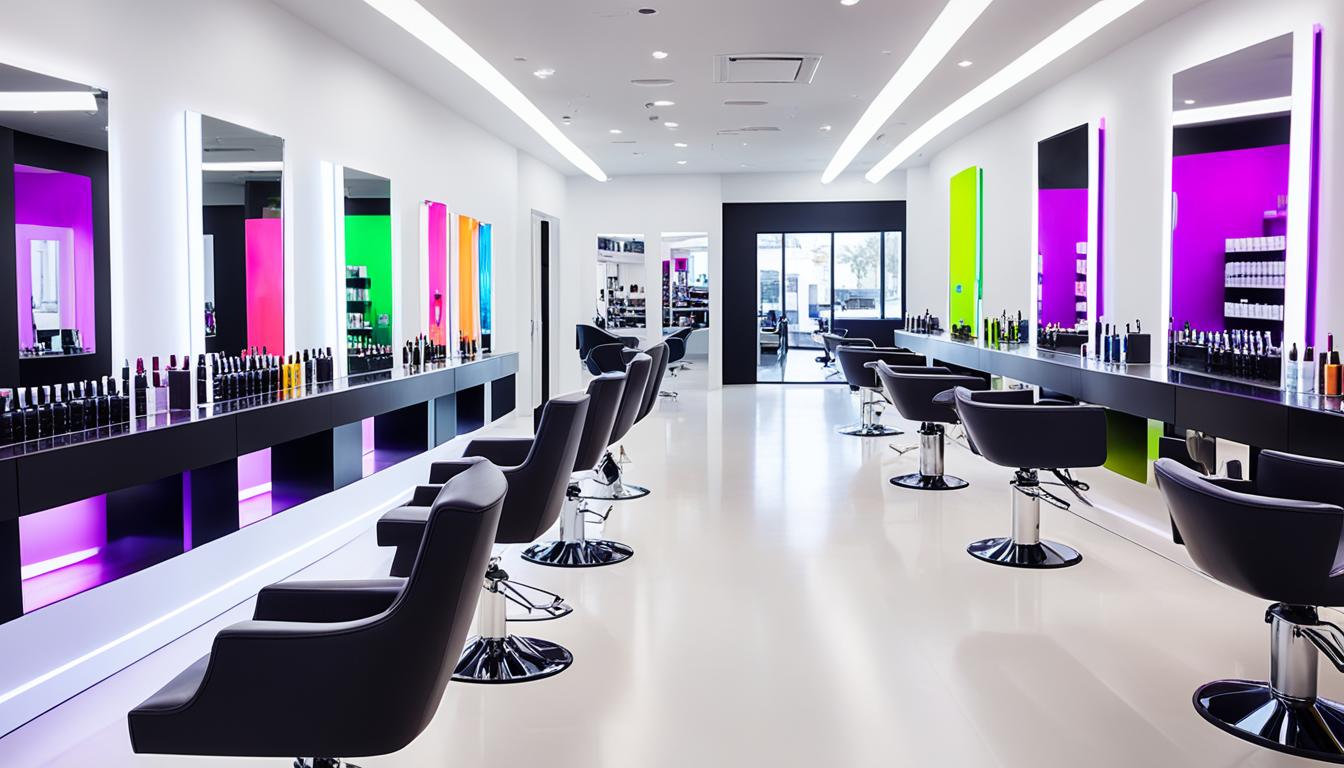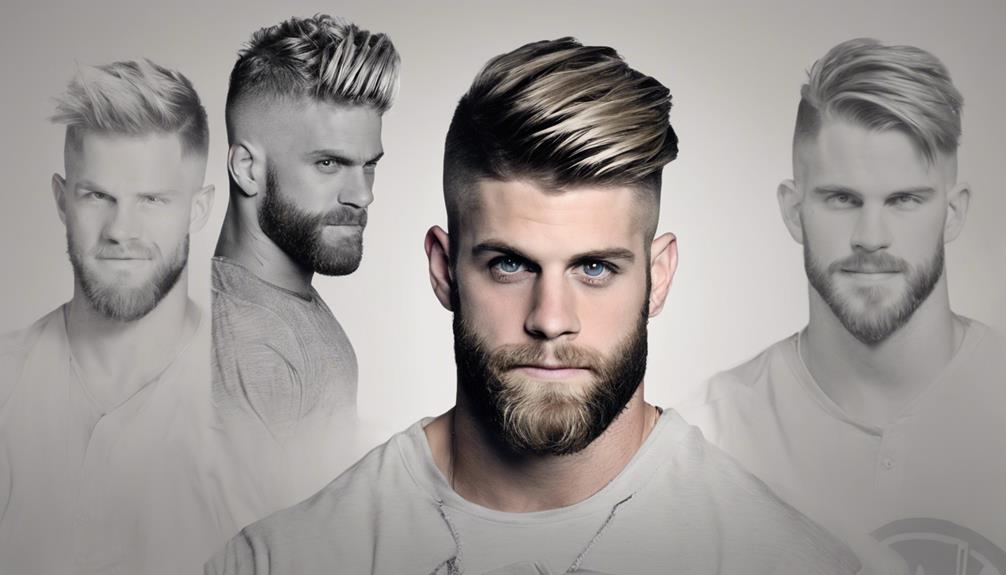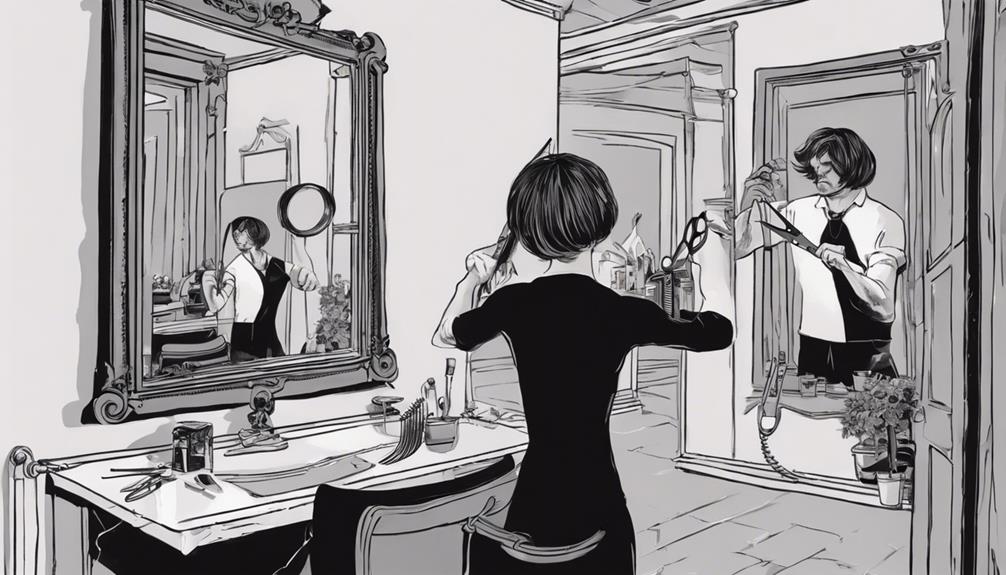When it comes to mastering blade haircuts, understanding clipper guard sizes determines hair length, while the taper lever technique guarantees precise cutting. Analyzing head shape aids in balanced cuts, alongside seamless fades through head shape analysis. Utilize fade blades for flawless skin fades, trimmers for detailing, and maintain clippers for efficiency. Blend with clip-over-comb and scissor-over-comb techniques, using fine-toothed shears for precision. Enhance cutting skills by perfecting taper and fade techniques, setting blades for closer cuts with consistent practice. Achieve smooth edges through meticulous work, mastering the clip-over-comb technique. For more detailed insights on mastering blade haircut techniques, explore further.
Key Takeaways
- Understanding blade differences for precise cuts and transitions.
- Mastering taper and fade blade techniques for flawless haircuts.
- Setting blades to zero-gap for closer, cleaner cuts.
- Consistent practice to perfect blade skills and achieve seamless fades.
- Focus on precision and attention to detail for mastering the blade haircut technique.
Understanding Clipper Guard Sizes
When it comes to mastering the art of blade haircuts, understanding clipper guard sizes is paramount. Clippers are our trusty tools, and the clipper blade, along with the corresponding guard sizes, determine the length of hair left after each pass.
Lower guard sizes like #1 and #2 result in shorter hair lengths, perfect for creating precise fades and shorter styles. On the other hand, higher guard sizes such as #7 and #8 leave longer hair lengths, ideal for maintaining more length or blending in longer sections.
By comprehending the nuances of clipper guard sizes, we can control the amount of hair removed during a haircut with finesse and accuracy. This knowledge allows us to cater to our clients' preferences, work with different hair textures, and execute various haircut styles flawlessly.
Mastering the Taper Lever Technique
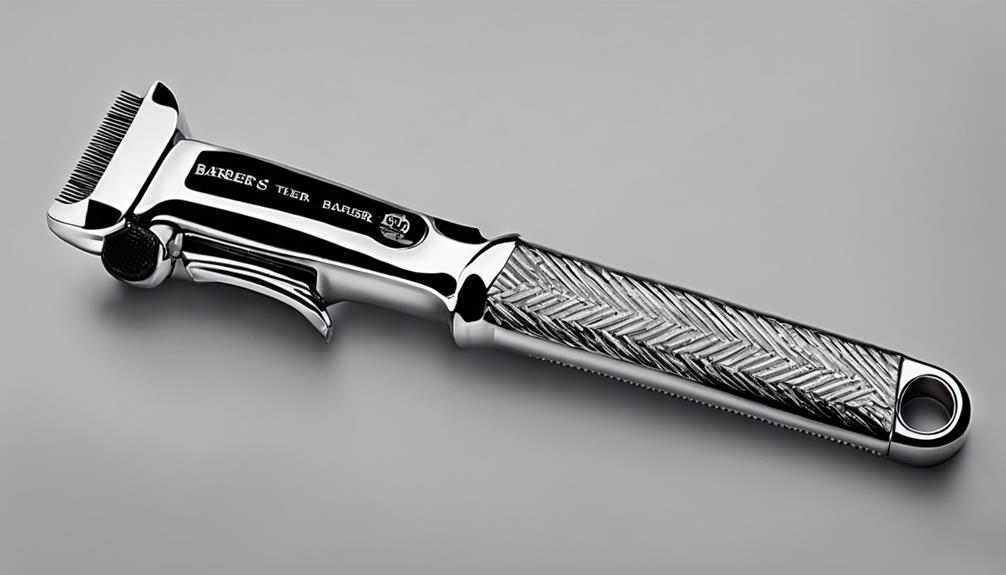
Let's start by understanding the basics of lever adjustment, which is essential for achieving precise tapers in haircuts.
We'll also provide you with some precision tapering tips to help you master this technique effectively.
Lever Adjustment Basics
Adjusting the taper lever on clippers is a fundamental skill for achieving precise tapering and blending effects in haircuts. The taper lever, located on the clipper's side, directly impacts the cutting length by adjusting the distance between the blade and the guard.
Moving the lever upwards increases the cutting length, while moving it downwards decreases it. This simple yet essential adjustment allows for smooth shifts between different lengths, ensuring a smooth and vital finish.
Mastering the taper lever technique is essential for barbers seeking to create customized haircuts with varying taper styles. Understanding how the taper lever functions empowers us to deliver impeccable results, enhancing our expertise in crafting flawless haircuts with precision and finesse.
Precision Tapering Tips
Mastering the taper lever technique enhances haircut precision by allowing seamless shifts in cutting length for precise tapering effects. Understanding how to adjust the taper lever on clippers is vital in achieving the desired fade blade outcome.
To perfect tapering, begin with a longer guard size and gradually adjust the taper blade for a seamless blend. Techniques like clip-over-comb or scissor-over-comb can further aid in achieving a flawless shift between lengths.
Precision in tapering demands a delicate touch and keen attention to detail when adjusting the taper. By mastering the taper lever technique, barbers and hairstylists can elevate their skills and deliver impeccable taper cuts with finesse.
Analyzing Head Shape for Precision
Understanding the nuances of head shape is essential for achieving precise and tailored haircuts that enhance a client's features and style. When it comes to analyzing head shape for precision in haircuts, consider the following:
- Determining Cutting Angles: Examining the head shape helps barbers determine the best angles for cutting and blending, ensuring a seamless and polished look.
- Creating Seamless Fades: Understanding the curvature of the skull aids in creating smooth and flawless fades that complement the natural contours of the head.
- Adjusting Techniques: Identifying any protrusions or indentations on the head guides barbers in adjusting their cutting techniques to achieve a balanced and customized haircut that suits the client's unique features.
Essential Fade Haircut Techniques
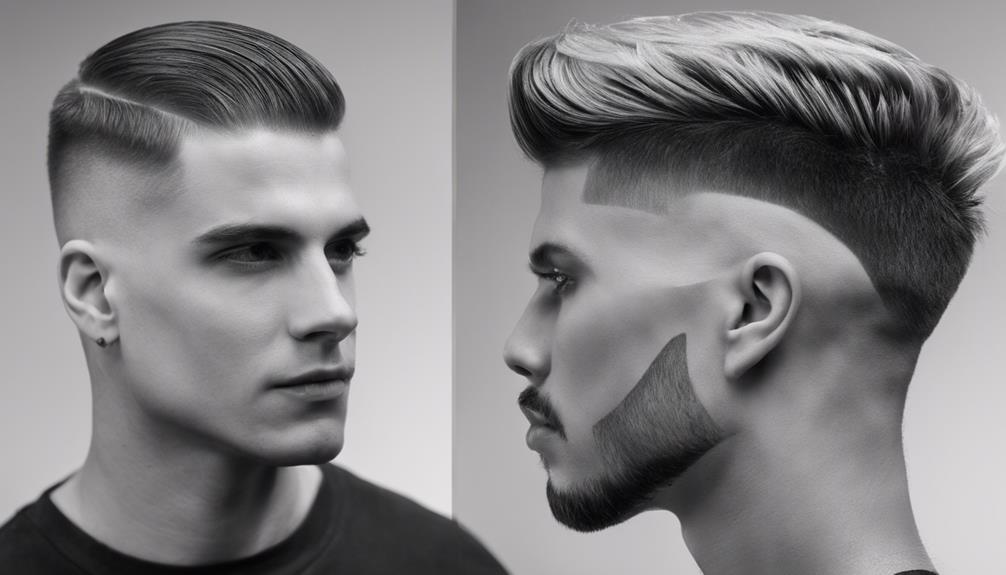
To achieve a flawless skin fade effect, utilizing fade blades is essential for creating sharp and defined lines. Fade blades, also referred to as surgical or zero-gap blades, provide an ultra-close cutting ability important for achieving seamless hair fades to the skin.
Mastering the fade blade technique involves setting the blade to zero-gap for a closer cut and then gradually blending the fade as you move upwards. These blades are key in achieving a bald fade effect, where precision is paramount.
In addition to fade blades, trimmers play an important role in adding detailing and finishing touches to guarantee a polished look in fade haircuts. By understanding how to use fade blades effectively and incorporating trimmers for precision work, you can elevate your fade haircut techniques to the next level, achieving professional results with sharp lines and seamless transformations.
Clipper Functions Demystified

After perfecting the use of fade blades and trimmers for achieving a flawless skin fade effect, the next step is demystifying the functions of clippers for precise and consistent cuts.
Here is a quick rundown to help you master the art of using hair clippers effectively:
- Adjusting the taper lever: This feature allows for seamless blending between different cutting lengths, ensuring a smooth shift in your haircut styles.
- Understanding clipper blade lengths: Knowing the various blade lengths and lever positions is vital for achieving accuracy in your cuts, providing you with the flexibility needed for different hair textures and styles.
- Proper maintenance: Regular cleaning and oiling of clipper blades are essential. This not only guarantees smooth operation but also prevents snagging during haircuts, maintaining the longevity of your clippers.
Maintenance Tips for Clippers
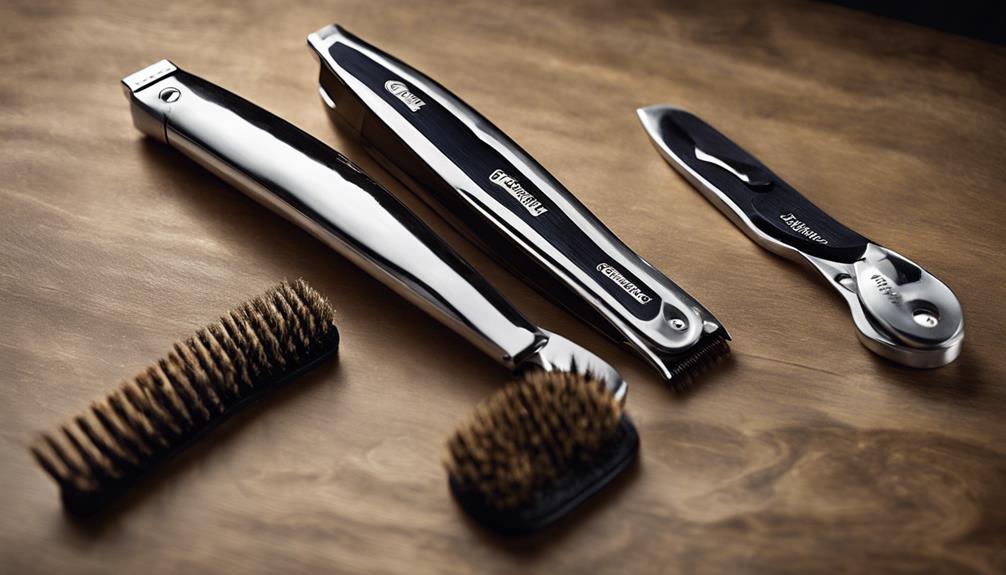
Regularly cleaning and oiling clipper blades is essential for maintaining their cutting efficiency and prolonging their lifespan. Hair clippers, like any tool, require care to function at their best.
After each use, gently brush off any hair residue and then apply a thin layer of clipper oil to the blades to reduce friction and prevent rust. This simple routine can greatly extend the life of your clippers.
Additionally, checking blade alignment is important to guarantee a smooth and even cut. Misaligned blades can lead to hair pulling or uneven results, which nobody wants.
If you notice that your blades are dull or damaged, don't hesitate to replace them promptly. Sharp blades not only provide a cleaner cut but also help prevent skin irritation.
Lastly, store your clippers in a dry and safe place to avoid rusting and keep them in top condition for your next grooming session. Happy clipping!
Art of Seamless Blending
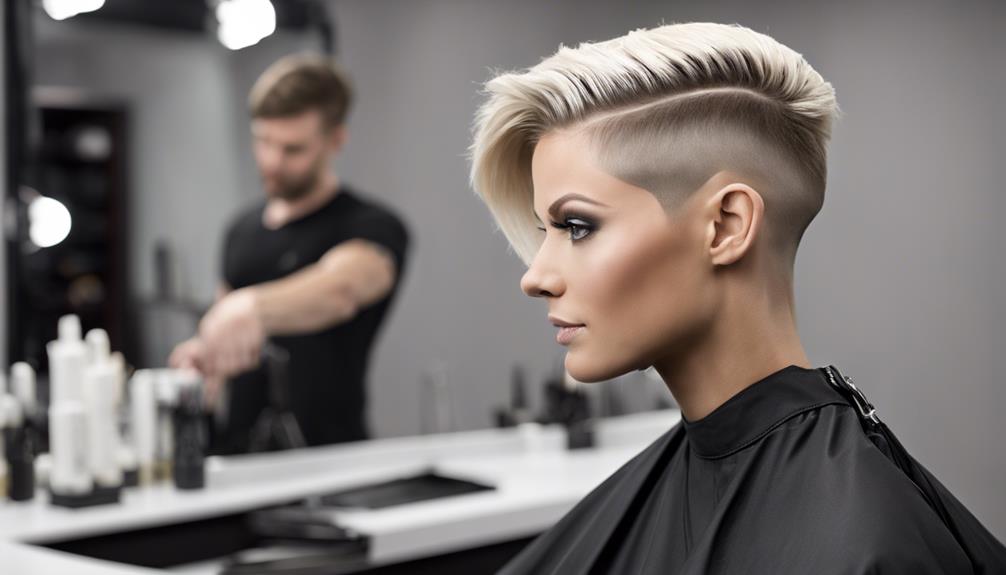
When it comes to achieving a flawless hair blend, mastering seamless integration techniques is essential.
Selecting the right blending shears and focusing on smooth edges are key components in creating a polished look.
Seamless Transition Techniques
Mastering the art of seamless blending in haircuts requires precision and attention to detail to smoothly shift between different guard sizes or blade lengths. When it comes to achieving flawless transitions, using clippers and trimmers effectively is key.
Here are three essential techniques for smooth shifts:
- Clip-Over-Comb Technique: This method involves using a comb to lift the hair while the clipper glides over it, ensuring a smooth blend between different lengths.
- Scissor-Over-Comb Technique: By combing the hair and using scissors to trim the excess length, you can create a smooth progression between sections.
- Fading Techniques: Mastering fading techniques is important for smoothly blending shorter lengths into longer ones, creating a natural-looking progression in the haircut.
These techniques, when executed with skill and precision, result in a flawless and polished finish.
Blending Shear Selection
When selecting blending shears for achieving seamless blending in haircuts, prioritize fine-toothed blades for precise cutting and smooth flow. It's important to choose blending shears with an ergonomic design and comfortable handles, ensuring ease of use during extended styling sessions.
Opt for high-quality stainless steel blending shears to guarantee durability and sharpness retention over time. Proper tension adjustment on blending shears is key for best cutting performance, allowing for seamless shifts in hair lengths.
Additionally, utilizing blending shears with different blade lengths offers versatility in creating flawlessly blended haircuts that flow naturally. Remember, the right tools, like blending shears, play a significant role in achieving that perfect haircut with seamless shifts and impeccable length consistency.
Tips for Smooth Edges
To achieve seamless blending and smooth edges in haircuts, mastering the clip-over-comb technique is crucial. When aiming for that flawless finish, focus on the details with precision and care. Here are some tips to help you achieve those sharp edges effortlessly:
- Consistent Technique: Ensure you maintain steady pressure and angle when blending to create smooth shifts.
- Angle Adjustment: Angle the clipper or trimmer slightly towards the hair to prevent harsh lines and maintain a natural look.
- Symmetry Check: Work meticulously in small sections, checking for symmetry to keep edges even and well-defined.
Precision Cutting Strategies
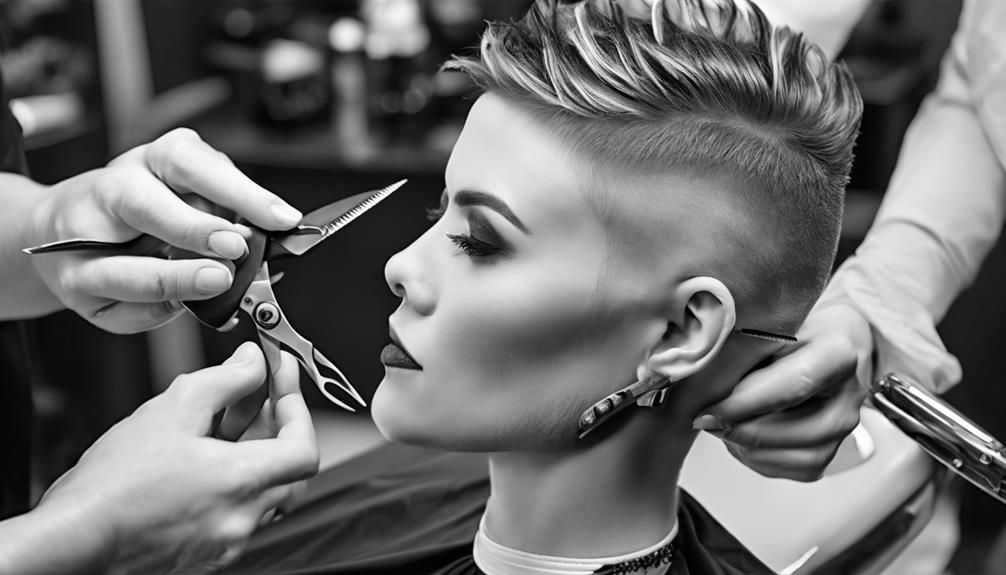
Precision cutting strategies in blade haircuts involve utilizing taper blades for smooth shifts and fade blades for crisp lines. When focusing on detail work, especially at the top of the head, taper blades are your best friend. These blades provide the flexibility to adjust cutting lengths seamlessly, allowing for precise blending of different hair lengths.
On the other hand, fade blades, also known as surgical or zero-gap blades, are essential for creating sharp lines and achieving skin fade effects. Mastering these blade techniques is key to impeccable tapers, fades, and seamless blends in barbering. By understanding how to leverage taper and fade blades effectively, barbers can elevate their cutting abilities to new heights.
Enhancing Cutting Abilities
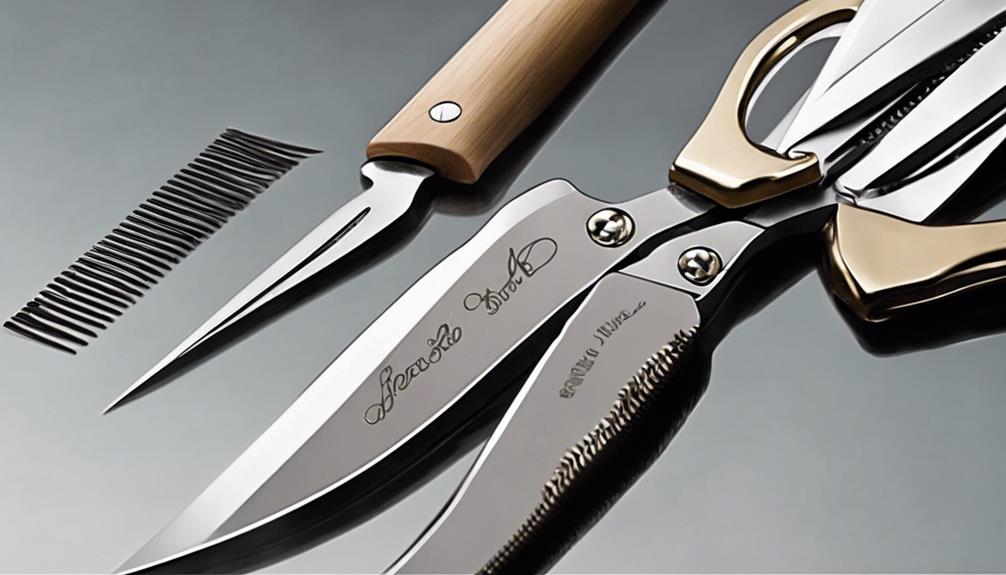
Enhancing our cutting abilities through consistent practice and keen attention to detail is essential for mastering the art of barbering. To improve your skills with taper and fade blades, consider the following:
- Understanding Blade Differences: Distinguishing between taper and fade blades is pivotal for achieving seamless shifts in haircuts.
- Mastering Taper Techniques: Taper blade mastery enables barbers to create flawless blends from short to longer hair on top, enhancing overall haircut aesthetics.
- Perfecting Fade Blade Skills: Fade blades are vital for creating sharp lines and achieving skin fade effects with varying lengths. Proper technique involves setting the blades to zero-gap for a closer cut, ensuring a smooth blend as you move upwards.
Frequently Asked Questions
How Much Do You Tip for a $20 Haircut?
We typically tip $3-$4 for a $20 haircut. It's customary to show appreciation for your barber's work. Cash tips are preferred. Some round up for convenience. Developing a good relationship with your barber can enhance your experience.
How Much Do You Tip for a $25 Haircut?
When we get a $25 haircut, we usually tip around $4 to $5, showing our appreciation for the service. It's a small gesture that can make a big difference and foster a positive relationship with our barber.
How Much Do You Tip for a $30 Haircut?
We usually tip 15-20% for a $30 haircut, which comes to $4.50-$6. It's a nice way to show appreciation for the barber's work. Tipping well builds a good relationship and guarantees excellent service.
Is a $5 Dollar Tip Good for Haircut?
We believe a $5 tip for a haircut is a kind gesture, showing appreciation for the service. However, tipping may vary based on satisfaction and service quality. It's important to tip based on your experience and the level of service received.
Can the Blade Hair Cut Guide be Used for Postpartum Haircuts?
Yes, the Blade Hair Cut Guide can be used for postpartum haircuts. This cutting postpartum hair guide is designed to easily trim hair at various lengths, making it perfect for new moms who are looking for simple and convenient hair cutting solutions at home.
Conclusion
In mastering the blade hair cut guide, we've equipped ourselves with the tools and techniques needed to achieve precision and seamless blending.
With a keen eye for head shape analysis and a thorough understanding of clipper guard sizes, we can now confidently enhance our cutting abilities.
Remember, practice makes perfect, so keep honing your skills and soon you'll be creating flawless haircuts with ease.
Keep cutting and keep shining!
